Compared to the complete history of musical instruments, the saxophone is a relatively new instrument. It was first conceived around 1840 and developed in 1846 by Adolphe Sax. The twentieth century had its fair share of instruments invented, but most of them were new electric instruments or electric variants of existing instruments. The saxophone is one of the most recent non-electric instruments and there are several types of saxophones. 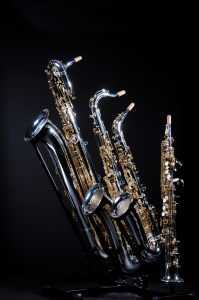
If you ask any saxophone player which saxophone they play, they probably have a main instrument but play multiple kinds. This isn’t unique to saxophone players. Guitar players, bass players, keyboard players, etc. all collect gear; different types of instruments to get different sounds for different playing situations. Likewise, clarinet players, trumpet players, flute players, etc. all need multiple instruments depending on the gig.
Personally, alto saxophone is my main instrument, but I own an alto sax, a soprano sax, a tenor sax, a clarinet, a flute, an EWI, and a C-Melody saxophone, and I play them all pretty regularly.
The purpose of this article is to familiarize you with the different types of saxophones for a few different reasons: so you can understand each of the saxophones’ unique applications, so you can recognize the different types of saxophones by seeing them and by hearing them, and so you can pick out which saxophone is right for you.
The Four Most Common Types of Saxophones
There are several types of saxophones. Since its original development and subsequent production, there have been numerous changes made to the saxophone. Because of this, many saxophones have been phased out or have become obsolete.
The modern versions of the saxophone are either Bb or Eb transposing instruments. This means that, on a Bb instrument, when you play C, the note sounding is a concert Bb. Likewise, on an Eb instrument, when you play C, the note sounding is a concert Eb.
All saxophones have the same fingerings, so it’s easy to switch between them.
The four most common saxophones are the soprano sax, the alto sax, the tenor sax, and the baritone sax. By “most common”, I mean that they are utilized the most in contemporary music.
Soprano Saxophone
The soprano sax is a Bb instrument. It is the smallest of the four main saxophones. It can be either straight or curved. The soprano is known as the hardest saxophone to play. Some well-known soprano saxophone players include: John Coltrane, Wayne Shorter, Sidney Bichet, and Kenny G.
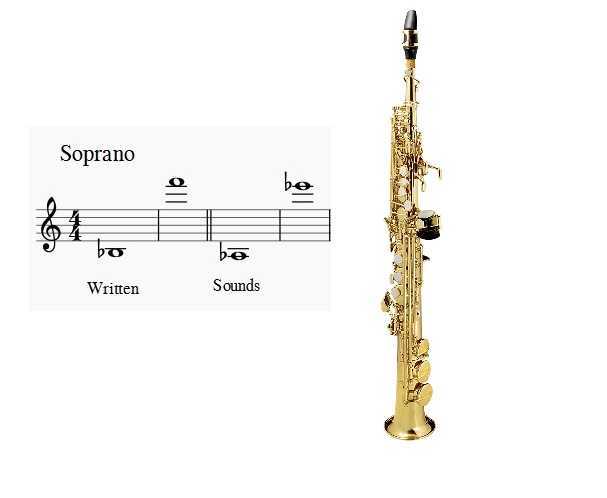
Alto Saxophone
The alto sax is an Eb instrument. The alto and tenor are the two most common saxophones. Some well-known alto saxophone players include: Charlie Parker, Cannonball Adderley, Kenny Garrett, Phil Woods, David Sanborn, and Maceo Parker.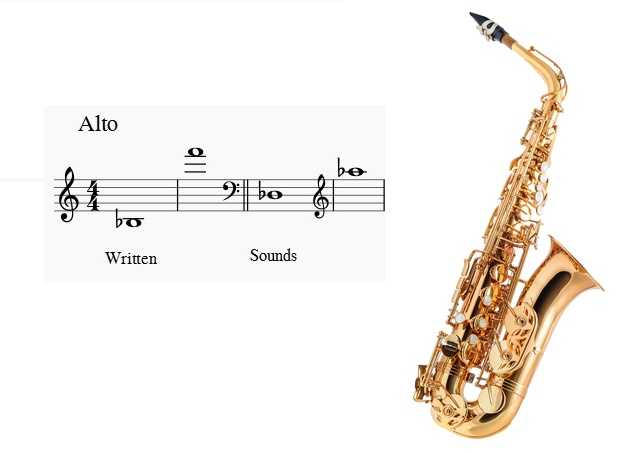
Tenor Saxophone
The tenor sax is a Bb instrument. It’s the most popular of the saxophones. You’ll hear it the most out of all of the saxophones on records ranging from jazz to pop. Some well-known tenor saxophone players include: John Coltrane, Sonny Rollins, Michael Brecker, and Clarence Clemmons.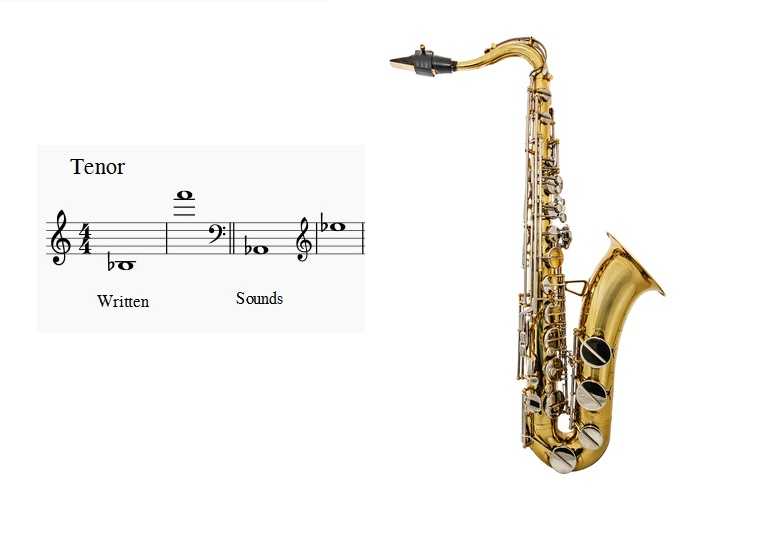
Baritone Saxophone
The bari sax is the largest of the four main saxophones. It’s an Eb instrument. It has some cool applications in jazz and funk music. Some well-known bari players include: Gerry Mulligan, Pepper Adams, and Gary Smulyan.
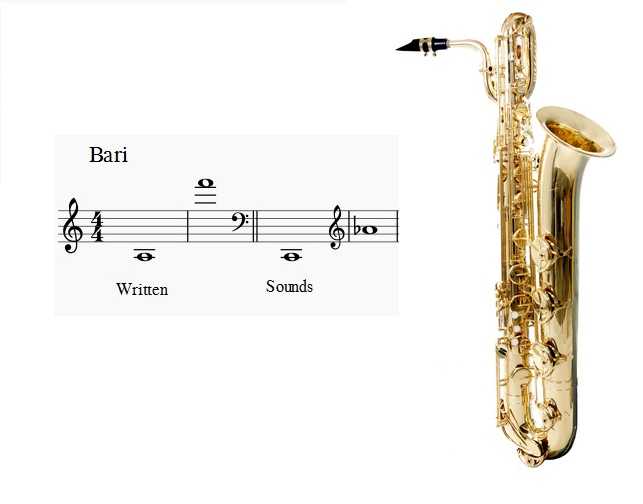
The ranges I’ve written out are approximate. It’s common for a bari sax to have a low A, although some are only pitched down to low Bb. Some altos have low As, but it’s not very common. Most altos, as well as tenors and sopranos, are pitched down to low Bb. The upper register of the saxophone is virtually limitless with altissimo.
Other Types of Saxophones
In addition to the main four types of saxophones, there are several other kinds. They are not as common, though. It is rare that you will hear one of these kinds of saxophones in popular music.
Sopranissimo, Sopranino, Bass, Contrabass, Subcontrabass Saxophones
These saxophones are other variants of Bb and Eb transposing saxophones. I’ve written them in order of size, from smallest to largest. The sopranissimo saxophone is only about a foot long, while the subcontrabass saxophone can be seven to nine feet tall. These saxophones are very expensive and not practical. Very few people play or collect these.
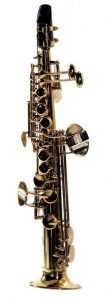
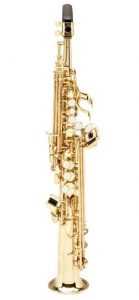
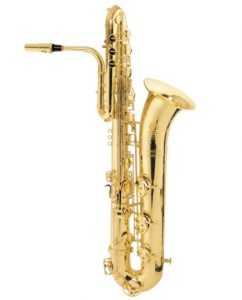
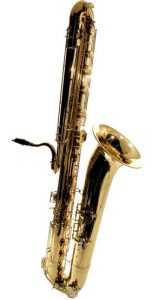
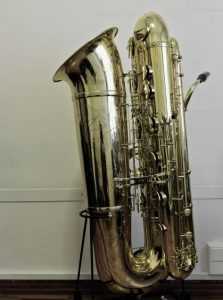
C-Melody Saxophone
The C-Melody saxophone was marketed in the mid-1910s to 1920s as a non-transposing instrument. You could look over the shoulder of a piano player and play along without having to transpose. Its popularity faded fairly quickly. Today, there are some new C-Melody saxophones being produced, but it’s not a practical instrument to own. You can get one from the 1920s for a good price if you want to own one for the novelty.
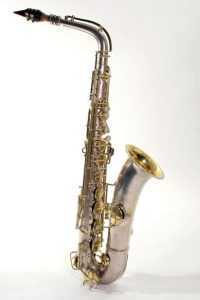
EWI
Wind synthesizers started to become popular in the 1970s. It was a response to the popularity of synthesizers. The Akai EWI was developed in the 1980s and is the most popular wind synth, although others do exist (Yamaha WX). EWI stands for “Electronic Wind Instrument”. It’s not technically a saxophone, although it’s not very difficult for a saxophone player to learn. Some notable players include: Michael Brecker and Bob Mintzer.

Others
There are other miscellaneous saxophones out there. In addition to Bb and Eb, saxophones were also originally produced in the keys of C and F. In addition to curved models, the alto and tenor saxophones have been made straight. In addition to brass, there have been saxophones made out of plastic, polycarbonate, and even wood. This video demonstrates some of the rarest models.
Their Main Applications
Each saxophone has its applications. In a traditional jazz big band, there are usually five saxophones: two altos, two tenors, and one baritone. Soprano is sometimes used as a double (in addition to flute, clarinet, bass clarinet, etc.). Since the instrument is relatively new, there isn’t a ton of classical repertoire for the saxophone. However, there are still plenty of twentieth century works for the saxophone, including solos, concertos, sonatas, etudes, etc.
The saxophone is also used as an ensemble instrument in concert bands, symphonic bands, marching bands, and occasionally orchestras. The saxophone has gone through phases in pop and rock music since the 1950s. It’s made appearances as a solo instrument in recordings by Steely Dan, Billy Joel, The Rolling Stones, George Michael, Sade, Bruce Springsteen, and many, many more. Recently, it’s made appearances on recordings by Lady Gaga, Katy Perry, Ariana Grande, Macklemore, Jason Derulo, and Fifth Harmony, to name a few. The saxophone is also frequently used in funk, soul, R&B, electronic music, etc.
Conclusion
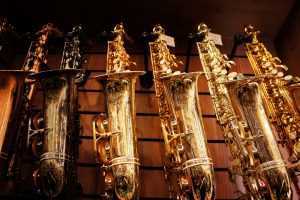
There are many types of saxophones in existence. Each one has its own qualities. There are four main types used in contemporary music. The more you become familiar with each saxophone, the more you’ll become aware of each of their unique tonal qualities. Soon you’ll be able to identify each type of saxophone from hearing recordings. For starters, though, you’ll at least be able to identify each one by how it looks. Many times at gigs, I’ve had people come up to me and misidentify the saxophone I’m playing (they’ll call my alto a tenor, or my tenor a baritone). If you’re brand new to the saxophone, I recommend beginning with an alto or tenor.


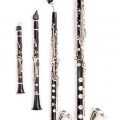

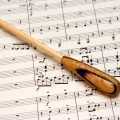

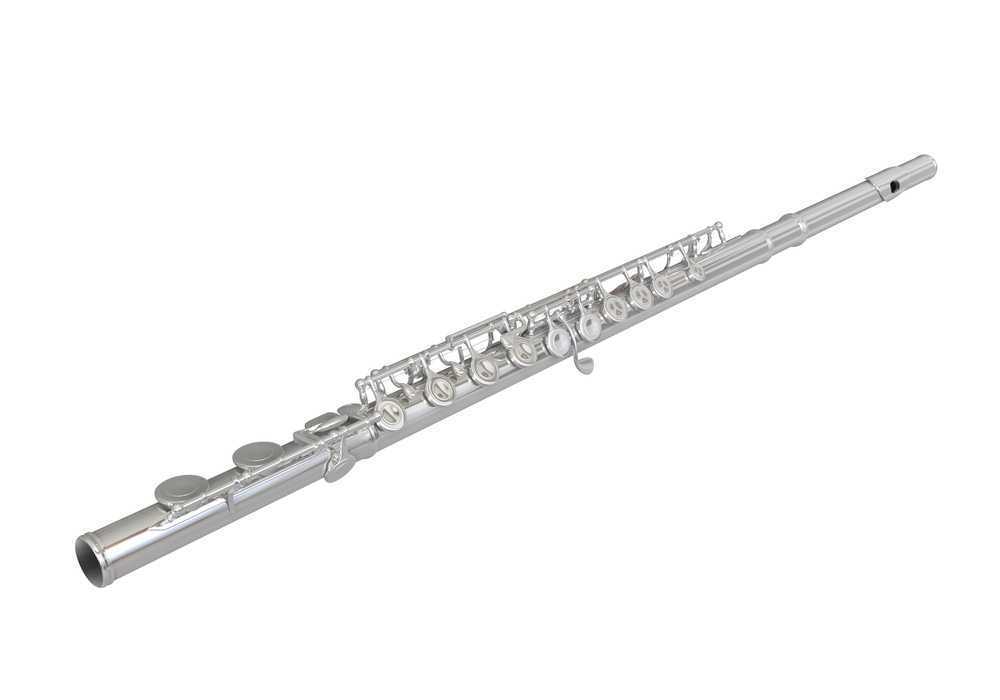

Good work
Thank you
Good
Great pictures